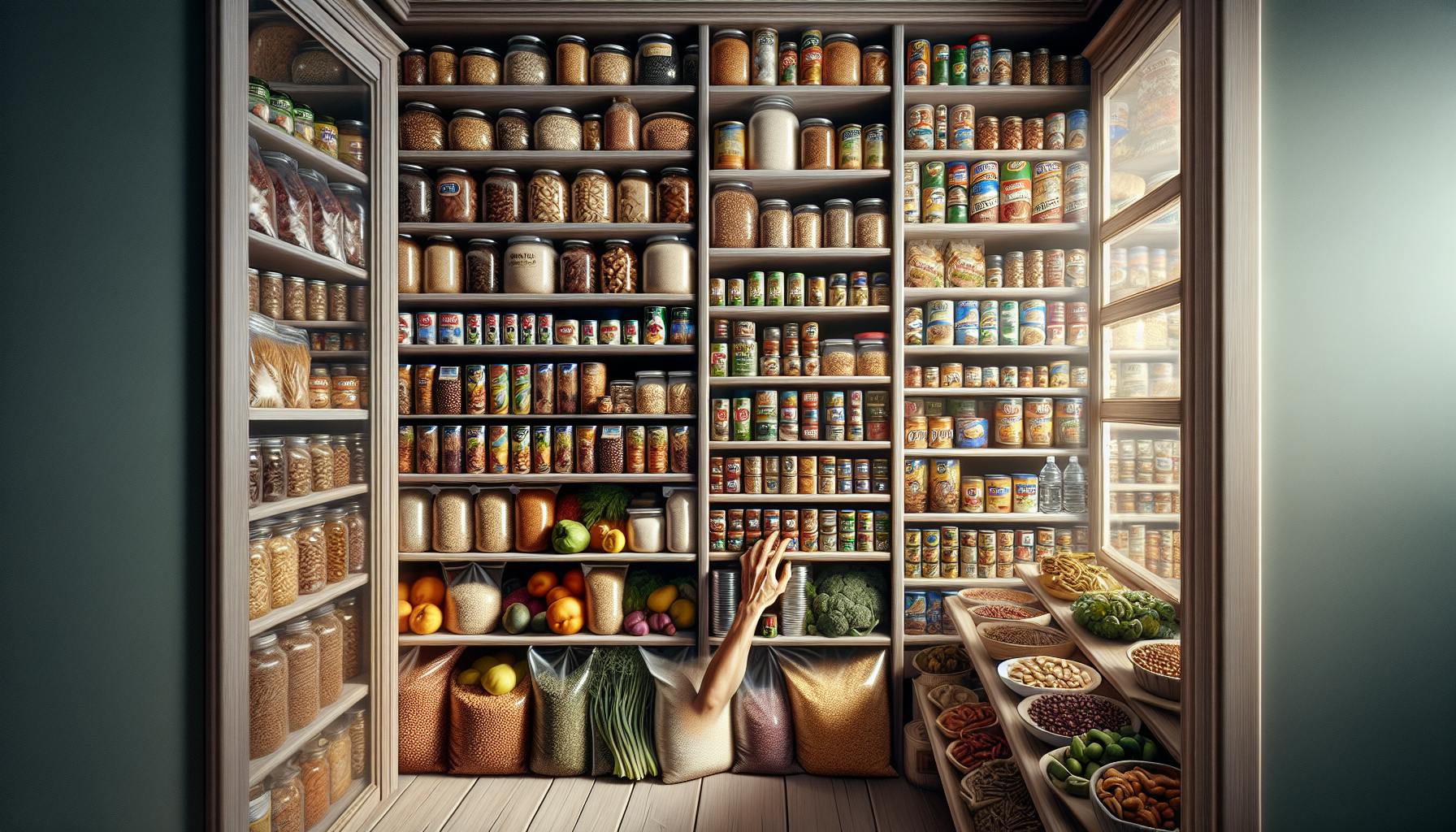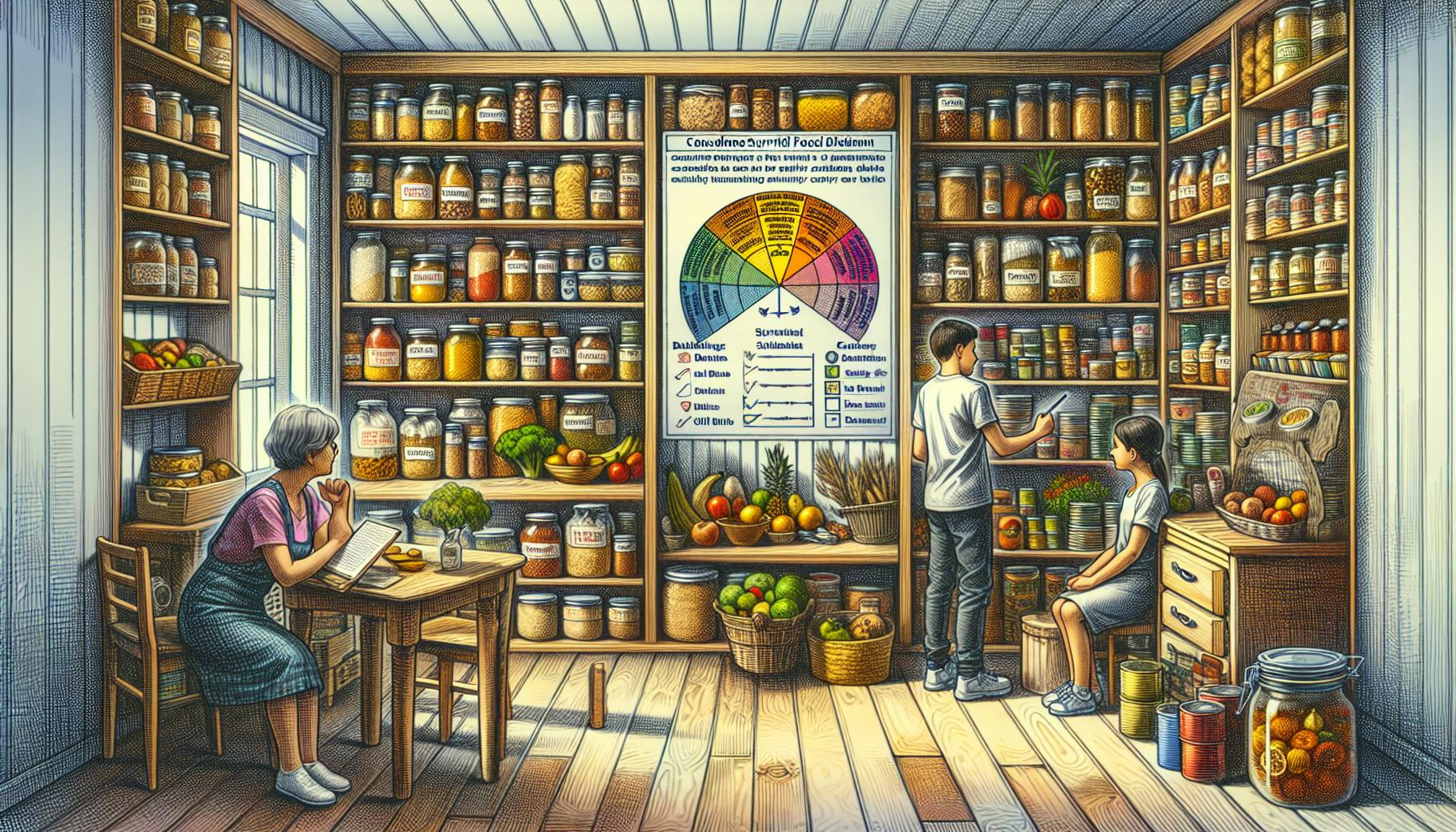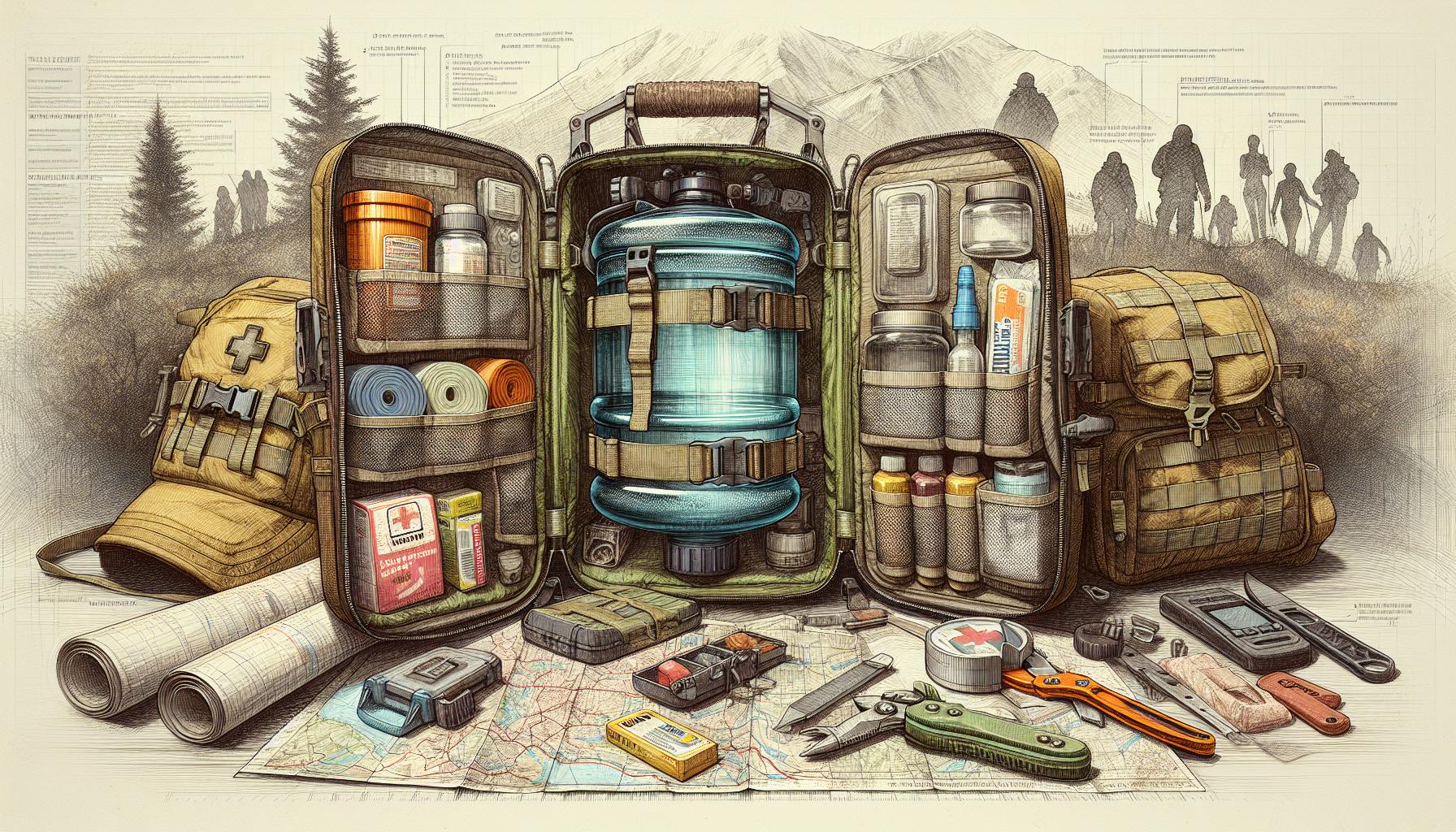Being prepared for emergencies and disasters is crucial for the safety and security of your household. Developing a comprehensive prepper stockpile list covering essentials like food, water, first aid, tools, and more is the key to maintaining basic needs if access to utilities and supply chains becomes limited during a crisis.
This article will provide an in-depth overview of the essential categories and supplies every prepper should have in their stockpile. We’ll cover key factors for building an effective stockpile, like proper storage methods, maintaining shelf life, and rotating your stock. With the right prepper stockpile list, you can ensure your household will have sufficient resources to survive both short and long-term emergencies.
Why a Prepper Stockpile is Essential
Emergencies and disasters such as natural catastrophes, accidents, pandemics, or societal collapse can disrupt normal supply chains and access to food, water, healthcare, and other essentials. Preppers build stockpiles of supplies to avoid panic and instability in these situations, providing for their household with their own reserves. A well-planned prepper stockpile list allows preppers to cover basic survival needs like:
- Food and water
- First aid and medical supplies
- Lighting, communication, and other tools
- Personal care and hygiene products
Having these reserves instills confidence and security knowing your family will be taken care of. It also reduces anxiety and fear if stores close, utilities fail, or supply chains break down. Being prepared helps avoid desperation and rash decision making when resources run low. Your stockpile allows you to support and help others in the community as well.
The recommended duration for prepper stockpiles is a minimum of two weeks, but longer is ideal. Three months is a common prepper goal. The following sections provide an overview of essential categories and supplies every prepper should include in their stockpile.
Food Supplies
Non-perishable, long-lasting food supplies are vital for a prepper stockpile. Focus on nutritious, calorie-dense foods like:
- Canned goods such as beans, vegetables, soups, and meats which last 2-5 years. Stock 50-100 cans per person.
- Staple foods like rice (25 lbs per person), oats (10 lbs), pasta (10 lbs), flour (25 lbs) with 5-10 year shelf life.
- Comfort foods like coffee, tea, sugar, spices add variety.
- High protein and nutrient sources like peanut butter (6 large jars), nuts (5 lbs), protein bars (36 bars).
- Canned fruits (25 cans) packed in juice offer essential vitamins.
- Meal replacement shakes (1-2 week supply) or survival food buckets for easy nutrition.
Include a manual can opener, cooking fuel if required, mess kits, utensils, and supplements to cover any nutritional gaps in the stockpile. Having sufficient water and water purification supplies is also critical (details below).
To get a balanced nutrition plan from your stockpile, supplement staple foods like rice, beans, oats with canned meat and fish for protein, canned or powdered milk for calcium, canned fruits and vegetables for nutrients, and comfort foods for morale. Multivitamins help cover gaps. Sample meal plans help organize cooking.
First Aid Equipment
Medical issues don’t stop during disasters, so first aid supplies are a key prepper stockpile category:
- Comprehensive first aid kits from Adventure Medical, Red Cross, or Build Your Own with bandages, gauze, tape, ointments to treat cuts, burns, sprains.
- Medications like pain relievers, cough and cold medicines, antibiotics like Cipro.
- Prescription medications for chronic illnesses like heart disease, diabetes. Minimum 90 day supply.
- Special needs items like glucose meters, blood pressure monitors.
- Disinfectants, gloves, masks to maintain sanitation and prevent infection.
Rotate stock every 6-12 months to ensure medications remain potent and in date. Replace anything expired regularly.
Tools and Supplies
Reliable tools for survival, communication, lighting, and repairs are prepper stockpile essentials:
- Multi-tools like Leatherman, Swiss Army Knife, shovels, axes provide utility for various situations.
- Walkie-talkies, solar chargers, batteries from Goal Zero enable communication if cell towers are down.
- Flashlights and lanterns from Maglite, Energizer, headlamps provide lighting if no power.
- Tarps, duct tape, zip ties useful for quick repairs and shelter setup.
- Matches, lighters, kindling help start cooking/heating fires.
- Paracord, ropes important for lifting, securing items.
Choose versatile, durable tools that serve multiple purposes from trusted brands like the ones mentioned above.
Personal Care and Hygiene
Maintaining health through proper hygiene is critical. Stockpile:
- Toothpaste, toothbrushes, dental floss for oral hygiene.
- Soap, shampoo, toilet paper, feminine products.
- Towels and a bucket for sponge baths with limited water.
- Sunscreen, insect repellent to protect skin.
- Critical OTC meds like anti-diarrheals, antacids.
Proper sanitation prevents illness and supports mental health during stressful situations.
Security
Safety is paramount. Prep wisely by:
- Stocking up on ammunition for firearms if legally owned. Follow all local laws.
- Having deterrent sprays like Sabre pepper spray, bear spray.
- Installing alarms, motion sensors, cameras to monitor property.
- Replacing doors and windows with solid, reinforced options.
- Using two-way radios for communication within a group.
Balance being prepared with avoiding paranoid overkill. Store guns and ammo securely.
Comfort Foods
Add comfort foods like:
- Hard candies, chocolate bars
- Honey, syrup, jam
- Instant coffee, tea bags
- Cookies, crackers, chips
- Spices, seasoning mixes
- Powdered drink mix packets
These provide familiar tastes of home when times are stressful. Have at least a 1 month supply.
Key Factors for Stockpiling
Effective stockpiling requires research, planning and organization. Follow these guidelines:
- Research and note expiration dates, especially for medications and perishable food. Follow FIFO (first in, first out) rotation.
- Store stockpile in a cool, dark place in sealed containers to maximize shelf life. Use oxygen absorbers.
- Take bi-annual inventories and replace expired/used items so stock stays fresh.
- Start with 2 week’s supply then build up. Many experts recommend at least 3 months supply.
- Store high priority items like water separately for easy access. Backup key supplies.
Food Storage Tips
- Keep food stockpile in plastic buckets with lids or sealed mylar bags with oxygen absorbers in a dry area.
- For dry goods, use food-grade plastic containers or mylar bags with oxygen absorbers.
- Freeze perishable meat and dairy products if storing over 6 months.
- Label all containers with contents and expiration date for easy rotation.
Water Storage Advice
- Use opaque, food-grade plastic containers; avoid translucent which promotes algae. 5-7 gallon jugs are ideal.
- Add 8 drops of bleach per gallon every 6 months to sanitize, double for cloudy water.
- Rotate supply every 6 months. Mark jugs with fill date and rotate based on first-in first-out.
- Have combination of stored water and water purification methods like Sawyer filters, purification tablets.
- Minimum of 1 gallon/per person/per day is recommended; more for pets, hygiene, sanitation needs.
Medication and First Aid Storage
- Take note of expiration dates on medications, medical supplies like dressings. Replace biannually.
- Store medical supplies in dark, temperature-controlled area if possible.
- Keep basic first aid kits in home, car, office and bug out bags for easy access during an emergency.
- Have at least 90 day supply of prescription medications for chronic conditions.
Essential Categories for Prepper Stockpiles
Based on the previous sections, the absolutely essential preparedness categories are:
Water – At least 1 gallon/person/day for minimum 14 days. Have storage plus purification methods.
Food – Calorie-dense, nutritious options with 5+ year shelf life. 2 week supply minimum.
First aid – Comprehensive kits, medications, tools to treat medical issues.
Self-defense – Deterrents and weapons following local laws and proper training.
Tools – Items for survival, communication, lighting, and repairs like radios, flashlights, multi-tools.
Top 10 Specific Supplies
Here are 10 of the most important items in a well-rounded prepper stockpile list:
-
Rice, beans, oats - nutritious staple foods.
-
Canned meats like tuna, chicken - for protein.
-
Canned fruits and vegetables - vitamins and minerals.
-
Peanut butter, nuts, protein bars - compact protein and calories.
-
Canned soups and broths - comfort foods, hydration.
-
First aid kit, OTC meds - treat injuries, illness.
-
Flashlights, batteries, candles - emergency lighting.
-
Multi-tool, knife, paracord, duct tape - utility.
-
Two-way radios - critical communication.
-
Pepper spray, alarms - self-defense.
Key Prepper Stockpile Takeaways
- Focus on essentials like food, water, first aid, tools first.
- Store at least 2 weeks supply, more is better. Follow proper storage and rotation.
- Be comprehensive within budget constraints. Prioritize key categories.
- Preparedness brings peace of mind and can lessen impact of disasters.
- Rotate stock to maintain freshness and potency. Replace expired items.
- Proper storage extends shelf life of reserves. Use sealed containers, oxygen absorbers.
- Take regular inventories to identify gaps in your stockpile. Maintain and expand over time.
Conclusion
Developing an effective emergency preparedness stockpile allows preppers to take care of basic needs during disasters. Following a comprehensive prepper stockpile list covering categories like food, water, medical supplies, tools and more provides reassurance and security. Store proper amounts, rotate stock, and use proper storage methods. A well-planned, organized prepper stockpile reduces panic and instills confidence to handle emergencies and unknowns. Prepare now before an emergency strikes.


